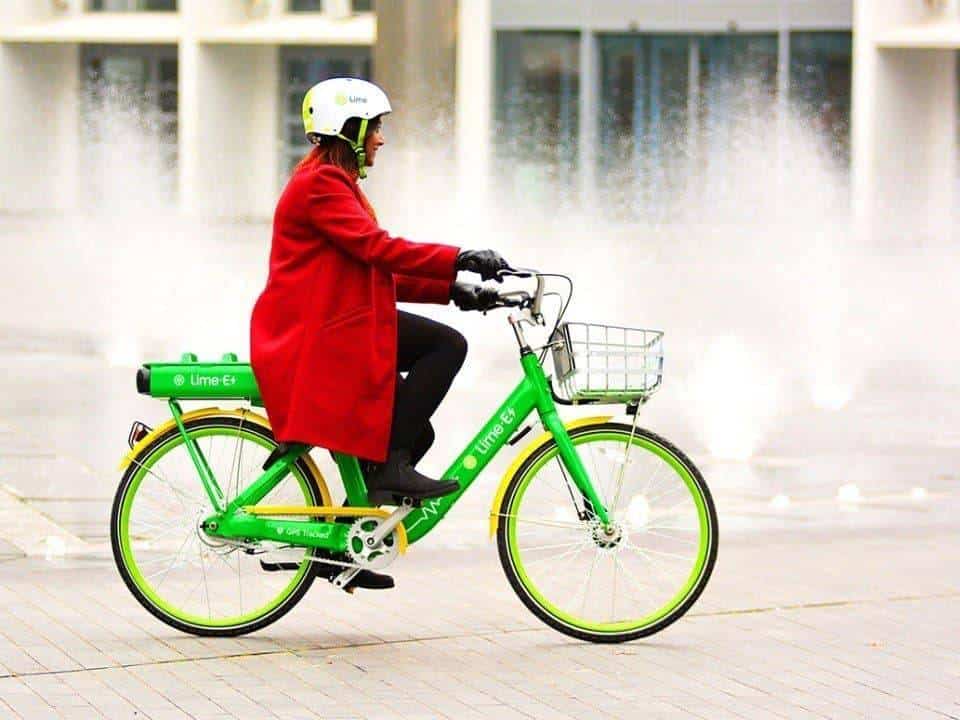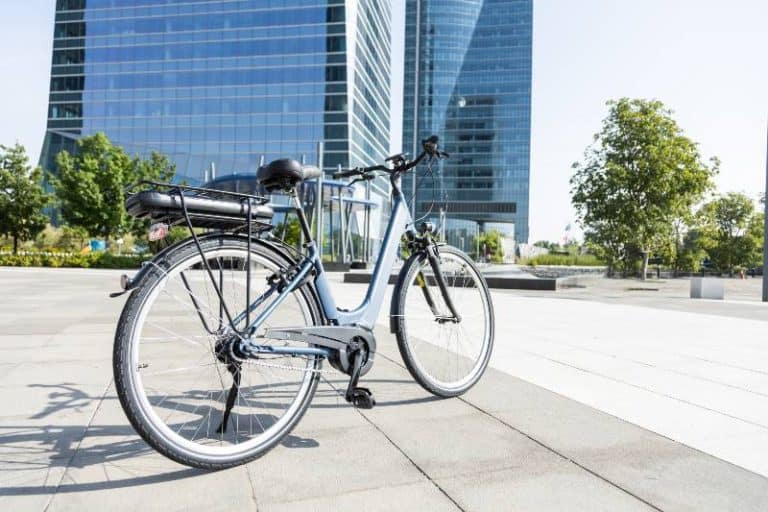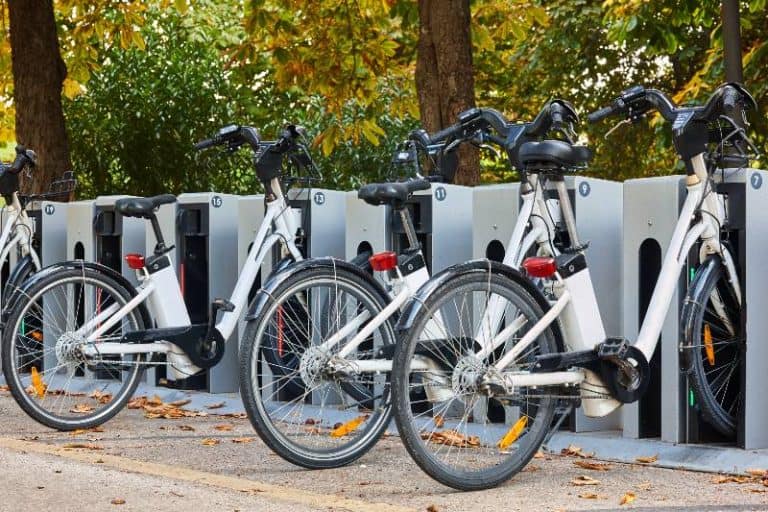Can I Get My E-bike Wet? Top Safety Tips for You
E-bikes are becoming more and more popular, as people are looking for ways to reduce their carbon footprint and get some exercise. But one question that many people have is: can I get my e-bike wet? In this blog post, we will explore the answer to that question!
Yes, you can get your electric bike wet! But there are some precautions that you should understand. The most important thing to understand is that an electric bike is a powerful machine, and it requires maintenance like any other piece of machinery. If you don’t take care of your bike, then it will not last as long as it should.
Key Takeaways
- You should avoid riding over any water because it could harm your motor or batteries. Your battery is seriously at risk if your device is immersed for any period of time.
- You should definitely remain a safe distance from it. However, like with any vehicle, you should aim to avoid driving through flooded areas, particularly if the water is rushing.
- The first number in an IP Code denotes the amount of resistance to solids, whereas the second number denotes resistance to liquids, and enclosures for electrical equipment are graded in accordance with this numerical scale.

Can I Ride an E-bike in the Rain?
Yes, but proceed with caution. The first is to check if it has been weather-tested, as not all brands or models are suitable for riding in the rain. The electronics in your bike could be damaged if you ride through deep puddles or other standing water.
Additionally, you should also avoid riding over any water that could drain your battery or motor. If your device is submerged for any length of time, it poses a significant risk to your battery. It’s definitely something you want to keep your distance from. But, like with any vehicle, you should try to avoid driving over flooded water, especially if it is rushing quickly.
Understanding IP Ratings
Many electric bikes or scooters are completely impervious to rain or dust, many models offer some protection. A vehicle’s ability to withstand the elements, including dust, incidental impact, and water, is measured by its Ingress Protection (IP) Rating.
Electronic vehicles, such as e- and e-scooters, must meet international quality standards established by the International Electrotechnical Commission (IEC), which is represented by 82 nations and sets the IP classification.
The standards are decided upon by the commission, which is an independent, non-profit group made up of electrical engineers, academics, and industry professionals. The IP rating of an electric bike or scooter depends on the quality of the seals used to enclose the vehicle’s battery, as well as any other compartments containing circuit boards and cables.
Enclosures for electrical equipment are rated according to a numerical scale known as “Ingress Protection Ratings,” or “IP Ratings.” The first number in an IP Code indicates the level of resistance to solids, whereas the second number indicates resistance to liquids. Each item now has its own distinct eight-digit number.
How Do I Know if My Electric Bike Can Get Wet?
If you’re looking to ride your electric bike in the rain, there are a few things you should know.
The first thing to consider is whether or not your bike is designed for inclement weather. Most electric bikes are made from aluminum alloy frames and forks, which can corrode in saltwater and other harsh environments. If you’re unsure about your bike’s durability, check with the e-bike’s manufacturer or visit an authorized dealer for more information.
Next, consider how much of a beating your battery can take. Electric bikes fall under the use of lithium-ion batteries, which can be damaged by water if they’re not properly sealed. Modern electric bikes have special waterproof seals around the battery case and charging ports that prevent moisture from seeping into the battery pack.
Finally, check if your bike has fenders or mudguards. Fenders keep rain and debris off of your tires while also protecting them from damage caused by potholes or gravel roads. They also help keep water out of the motor compartment so that it doesn’t short-circuit any electrical components inside the motor hub motor assembly (if applicable).
Get an eBike That’s Built for Your Climate
If you live in a sunny climate, an electric bike can be a great way to get around and enjoy the outdoors. But if you live in a place that’s prone to rain, snow, or other inclement weather, you may have considered getting an electric bike (or eBike) for your daily commute. But what exactly makes an eBike ideal for cold and wet conditions?
The first thing to consider is how the bike is powered. Most eBikes use a battery as their main source of power, which means they can run in rain and snow without any problems — but they won’t last as long on a single charge. Some eBikes are also pedal-assisted, meaning that when you push down on the pedals and begin pedaling, the motor kicks in to help you along. This helps keep your battery charged while giving you extra help when needed.
If you’re looking for an eBike that will go further on a single charge and be able to handle rain and snow better, consider buying one with an internal hub motor instead of an external one. Internal hub motors don’t require any cables or wires to connect them to your bike’s electrical system, so there’s no chance of water getting into them during inclement weather conditions. They’re also typically less expensive than external hub motors since they don’t require any additional parts or assembly work.
Safety Tips For Riding Your E-bike In The Rain
Riding your e-bike in the rain can be a little tricky. Not only are you dealing with slippery conditions and wet roads, but your battery and motor will also be affected by the moisture. If you’re not careful, you could end up stranded on the side of the road in a storm without any power.
To help you get home safely, we’ve put together some key tips for riding your e-bike in rainy weather:
Avoid excessive rain
While it’s fine to ride in the rain, as a precaution, you’ll want to stay away from rainfall in excess. Of course, use your judgment; if you’re drenched with just minutes of riding, it’s probably time to call it a day. E-bikes are expensive, and riding out the rain on your bike isn’t a smart idea. If you have the option, waiting out the rain is always preferable.
Apply Fenders
The drivetrain on a standard e-bike can withstand minor splashes of water, and the batteries can operate in a variety of weather situations. However, manufacturing safety mechanisms frequently fail to defend against huge amounts of debris.
Protect your bike from water, mud, and debris by using a fender. It’s preferable to buy one made of metal for physical debris, but plastic is ideal for spraying water.
Reduce E-bike’s Tire Pressure
On a rainy ride, you’ll want exceptional traction because your tires are more prone to roll too rapidly, even on freshly paved pavement. Standard tire pressure is 100 psi, but in slippery circumstances, reduce tire pressure to 10 psi or less to increase traction.
Your tires will have stronger traction on the road at 90 psi, which will assist you to avoid falling and hydroplaning on ice.
Use Your Lights
We’ve already discussed how visibility is a problem in cloudy weather. However, seeing other vehicles on the road is important for your personal safety, but you also need others to see you in the rain and snow.
The majority of nations that have legislation regarding e-bikes, such as the United States, require front and rear lights. Lights, on the other hand, may not be adequate. To protect you as well as other drivers, install visible markers on your e-front, bike’s sides, and back.
Look Out for Slippery Spots
When it rains, there are numerous areas that can turn slick. Keep an eye out for these spots and slow down when you come close to them. You don’t want to risk collapsing or colliding with another vehicle or person. Additionally, most e-bikes have water resistance, but it’s always important to be careful.
Look out for and avoid puddles and slush that could cause your tires to skid if you’re traveling on asphalt or concrete. If you’re driving on grass or dirt, keep an eye out for mud or leaves that could cause your wheels to lose traction.
Slow down and apply the brakes early
Wet conditions can make it more difficult to swiftly stop your e-bike. When approaching intersections or other traffic dangers, allow adequate time. This will assist you to avoid skidding and losing control of your motorcycle.
If you do skid, remember that the great torque of an electric motor makes it more difficult to regain control than it would be on a standard bike. If you are able to regain control of your e-bike, avoid making any rapid movements that may lead you to lose control again.
If you do fall off your bike, be calm and try to determine whether or not you have been injured. For example, if you hit your head or tailbone on the ground, before standing up or moving about too much, check for blood or other indicators of injury.
Don’t Lean into Corners
Although an e-bike performs similarly to a standard bicycle, it is somewhat heavier. Consider your e-bike to be a motorbike, and don’t lean too far to one side when turning.
On a BMX or similar, you can get away with leaning, but an e-bike may collapse while turning a tight curve.
Instead, use caution while applying the brakes or pumping them as though you’re hitting an ice patch. These methods will keep your tires on the road and your bike balanced by keeping them on the road.
Weatherproof Your gears
One of the steps to riding your e-bike in the rain is to make sure that your gears are weatherproofed. If they aren’t, then your bike could get damaged by water. If you don’t know how to do this yourself, then contact a professional mechanic or take your bike to a shop that can do it for you.
Dry the battery
Drying the batteries, like drying the bike, is an important step after you’ve finished riding. Even if it’s just light rain, you never want to risk getting your e-battery bike wet. When you’re finished, remove the bike’s battery and dry it with a towel. Ensure that the cabin of the battery is also free of water or moisture.
Wipe the bike down
Don’t just leave your bike to dry once you finish your ride. Take the time to wipe down your bike with a clean towel as soon as possible to remove any moisture. This easy action will keep your bike in better shape and increase its lifespan.
Use proper storage
Once you’ve completed all of these precautions, make sure your bike won’t get wet. Even though you usually keep your bike outside or on a porch, consider moving it during the rain.
Rain, snow, or sleet may all damage your bike, even if it’s only a small bit coming in under your porch. Never underestimate the damage that prolonged exposure to the elements can cause to your e-bike, and perceive it as an investment.
You wouldn’t leave your phone or laptop outside in adverse weather. So, for the time being, keep your e-bike in a garage or another secure location.
Avoid excessive rain
If you can avoid riding until the storm passes, by all means, do so! Riding in a severe downpour makes controlling your e-bike much more difficult and raises the chance of both you and your bike collapsing.
Take precautionary measures
Apply dielectric grease to your e-electrical bike’s contact points. This preventative strategy can aid in the prevention of corrosion and contamination. It will give your e-bike the best chance of remaining functional in damp situations.
Always Dry the Battery after Riding in the Rain
The most important thing to remember when riding in the rain is to always dry your battery afterward. This is due to the fact that moisture can cause short circuits and damage to your battery pack. If moisture enters your battery pack through any gaps, such as those surrounding the base or connections, it’s best to disassemble it and allow it to air dry before reassembling it. Otherwise, you risk damaging your battery pack or, worse, your entire electric bike!
Have fun and enjoy the experience
Have fun and enjoy the experience! If you’re new to riding an electric bike, this may be your first time riding in the rain. Don’t worry – it can actually be more fun than riding in dry conditions! Just make sure that you take extra precautions and keep yourself safe from injury.
Keep the rider in mind
As electric bike riders, It’s important to remember that using an e-bike can be dangerous if you don’t take safety precautions into account. One of these precautions involves keeping yourself safe while riding your bike. If you’re going downhill or uphill on your bike, make sure that there isn’t any debris on the road that could cause you to fall off your bike or have trouble maneuvering around it. Also, make sure that there aren’t any cars coming up behind you so they don’t hit you while you’re cycling through traffic.

Can I Get My E-bike Wet FAQs?
Are e-bike batteries waterproof?
They aren’t waterproof, but most bikes these days are designed with water-resistant sealed components that keep general spray and rain out of the battery, motor, and controller. These electric bike parts are not waterproof, but they are meant to withstand a regular rainy day ride.
Can you leave an electric bike outside?
You certainly can, but It is not advisable to leave an e-bike outside for extended periods of time because it exposes the bike to moisture. The ideal approach to storing an e-bike is to leave it in a dry, covered area (such as a garage or shed) or to move it indoors.
Should I wash my bike after the rain?
If your bike has been exposed to rain or other moisture, you should clean and dry it as soon as possible. This will help prevent the growth of mold and mildew. It’s also important if you ride in wet weather often because riding in the rain can cause damage to your bike’s battery and motor.
If your bike has been exposed to water, clean it as soon as possible.
Dry off all removable parts (such as battery covers) with a towel. If there is any visible moisture inside your frame, it may be best to let the bike fully dry before replacing any parts or recharging the battery so that no moisture remains inside.
If you don’t have time to take the bike apart right away, at least remove the battery and let it sit out for several hours so that any remaining water can evaporate before recharging it again.
Conclusion
Although it may seem daunting at first, cleaning your e-bike is actually a very easy process that only requires a few simple tools and supplies. By following the steps in this article, you can have your e-bike looking and running like new in no time. Be sure to check our website for more helpful articles on everything from bike maintenance to cycling tips.






